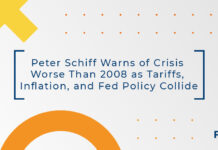The ominous-sounding technical price pattern could again trap bears on the wrong side of the market as the Bank of Japan plays down chance of a near-term interest rate hike.
-
BOJ’s Uchida downplayed rate hike concerns amid market volatility.
-
The anti-risk yen slides while BTC and stock futures rise after Uchida’s comments.
-
The renewed risk-on hints at a possible bitcoin death cross bear trap.
It appears bitcoin’s impending death cross, a bearish technical pattern, will again live up to its reputation as a contrary indicator, presaging renewed bullish price action as it did in September 2023.
That’s because early on Wednesday, the influential deputy governor of the Bank of Japan (BOJ), Shinichi Uchida, said that the central bank wouldn’t hike borrowing costs when markets are unstable, weakening the case for a continued unwinding of “yen carry trades” and resulting risk aversion in risk assets, including bitcoin.
“As we’re seeing sharp volatility in domestic and overseas financial markets, it’s necessary to maintain current levels of monetary easing for the time being,” Uchida said in a speech to business leaders in Hakodate, Hokkaido.
Other things being equal, BOJ’s latest comments mean limited downside in the cryptocurrency even as the death cross, characterized by the cryptocurrency’s 50-day simple moving average (SMA) moving below the pivotal 200-day SMA, looms.
Bitcoin traded firm following Uchida’s comments, briefly topping the $57,300 mark as the Japanese yen (JPY) depreciated to 148 per U.S. dollar (USD) from 145 per USD. Japan’s equity index, Nikkei, rose 4%, signaling a risk reset, and futures tied to the S&P 500 rose 0.8%.
“The BOJ struck the ‘Yen put,’ and the Nikkei will be driving the Nasdaq and S&P to their pre-selloff levels,” pseudonymous market observer Global Macro said on X.
The yen carry trade involves taking out cheap yen-denominated loans and investing in high-yielding currencies like the Mexican peso and risk assets. The strategy has been quite popular in recent years as the Bank of Japan kept interest rates at zero while others, including the Fed, raised borrowing costs rapidly to combat inflation.
However, last Wednesday, the Japanese central bank raised rates, ditching the ultra-easy monetary policy for the first time in 17 years. The hawkish move triggered an unwinding of carry trades, causing broad-based risk aversion. BTC tanked from $66,000 to $50,000 in five days to Monday.
“By July 16th, the equity markets and many other risky asset markets peaked. For whatever reason, these asset markets began to sell off. As the sell-off continued, recent entrants into the YCT [yen carry trade] saw their assets falling, and to be clear, that is almost always the driver of unwinds. But worse, the Yen began rallying slowly. That began the unwind,” Andy Constan, CEO of Damped Spring Advisors, said in a detailed yen carry trade explainer on X.
“The unwind of the trade results in inelastic price moving flow to buy Yen and sell risky assets. The sale of the risky asset also impacts the much bigger set of levered investors who don’t have any yen exposure at all and they get margin called as well,” Constan added.
Source: coindesk.com





